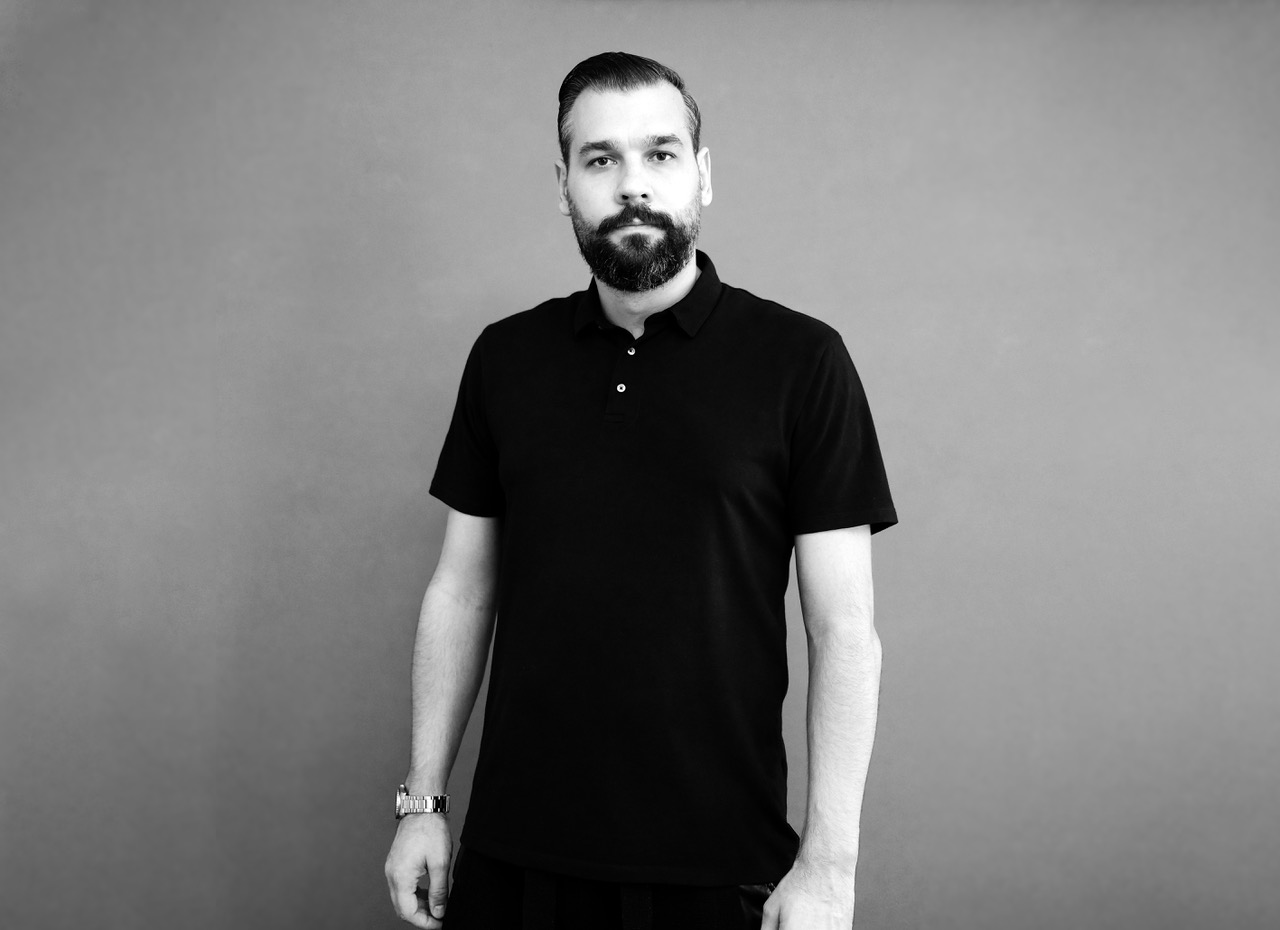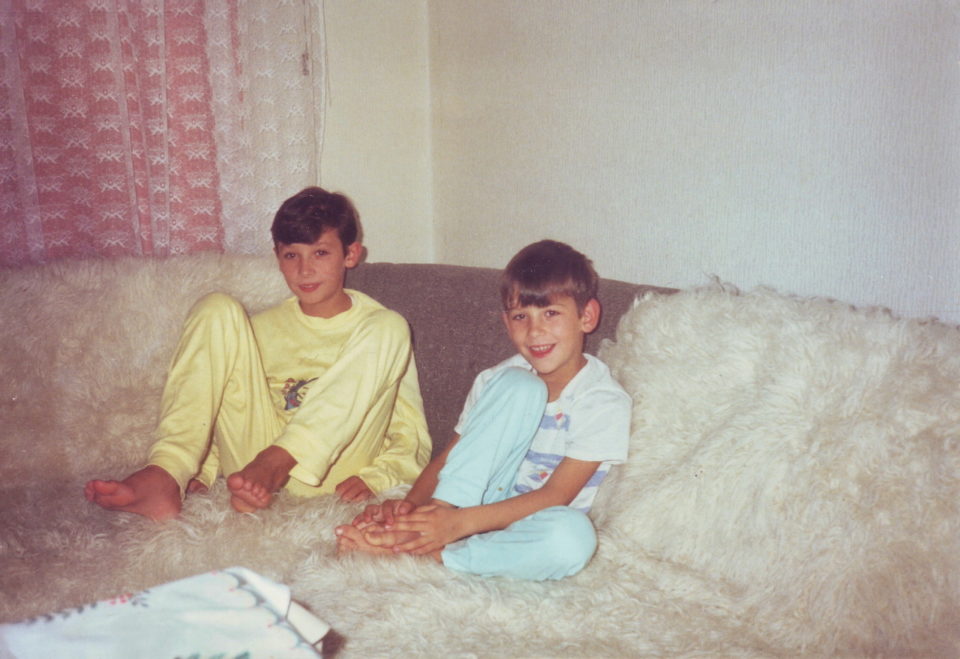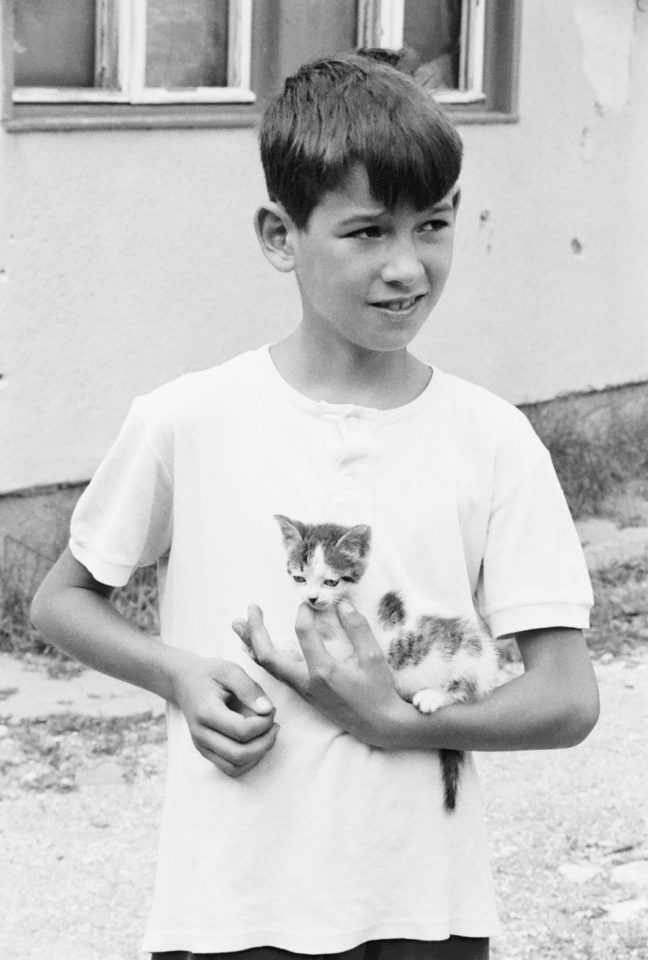
Džemil Hodžić was just a child when his brother Amel was tragically killed by a sniper during the siege of Sarajevo. Driven by a desire to find photos of his brother, he established the Sniper Alley platform in 2019, with the aim of collecting photographs, particularly those of children who lived through the Sarajevo siege. However, the Sniper Alley project is more than a mere collection of photographs, it is a testimony to survivor resilience.
The project began rather by chance, without much prior planning, rooted in Hodžić’s deeply personal quest for pictures of his brother, his family, or himself. In the years after the war, while scouring the internet for glimpses of the past, an inner turmoil began to stir within him. Persuaded by a trusted friend, Hodžić decided to put his story down on paper and to embark on the project. “I didn’t know I had that in me – that love, that anger, that desire. It’s all a mix that makes Sniper Alley,” reflects Hodžić.

He had long been held back by thoughts that his own individual story was irrelevant, a sentiment that still haunts him when he introduces the project, refraining from speaking in the first-person singular. Growing up as a child affected by the war, no one ever asked him about this experience or about his brother. This muted existence fueled a desire to break the silence and lend a voice to his story.
“I believe that, through inertia, I’ve created a platform for myself and others to give a voice to those who have none,” he notes, underscoring the collective nature of the Sniper Alley project.
Indeed, the project is not only about Hodžić’s personal journey. Beyond his love for his slain brother, his vision encompasses all the children of the Sarajevo siege—both those whose lives were tragically cut short and those who survived the siege in all its brutality. Over time, the personal as well as shared motives behind the project multiplied. Numerous new opportunities presented themselves and as the project branched out in multiple directions, it became challenging to articulate a rigid definition. Hodžić describes it as “an archive, a database of photos, experiences, and testimonies from all of us who lived through the horrors of war, siege, and genocide.”
Hodžić observes that the general public has to fully grasp the true significance of the Sniper Alley project. In an effort to illustrate its profound impact, he draws on a simple analogy which underlines the value of a single photograph, not to mention the hundreds or thousands compiled in this unique archive. In his analogy, Hodžić likens the collection of photographs to the study of mushrooms from the same war-torn regions. Just as such an endeavor would hold immense importance for Bosnia and Herzegovina as a nation, offering insights and utility for future generations, the photographs from the war similarly possess a unique value. They serve as a window into the harsh realities endured during the conflict, offering a visual testimony to the lives affected by the siege.
“It’s important for the living and even more important for those who are no longer alive, for whom only the living can speak,” explained Hodžić. Recently, he received, for the first time, pictures from an elderly woman’s private collection, which was the initial idea behind the project.
To keep the project going and to archive and document its content, Hodžić relies on the expertise of a diverse group, including historians, journalists, photographers, and activists. Their contributions are pivotal, as they collectively transform the Sniper Alley project into an extensive platform of historical value. In this way, Hodžić aspires to facilitate the work of future researchers and journalists, recognizing the project’s potential as an invaluable resource for those seeking to explore or shed light on past atrocities, events, or daily life during the Sarajevo siege.

Each image has its own story, weight, and meaning that might not be clear now, but will be revealed in time. Whether it’s an architect or someone searching for a single photograph of a lost relative or a familiar street, these images may hold profound meaning, underscoring the relevance of this project.
To date, Hodžić has managed to upload 113 galleries on the project’s website. His network now extends to 170 other photographers, many of whom have agreed to contribute their images, promising a significant addition to the project’s ever-expanding archive. Hodžić remains patiently optimistic, awaiting their submissions. The response from these photographers has been remarkable, revealing the enduring vitality of their images even after the passage of many years. In general, the photographers’ reactions have been marked by gratitude, kindness, and enthusiasm. Sniper Alley stands as a profound tribute to their work, representing an opportunity for them to share their experiences in ways that may not have been possible during the war.
In terms of expanding the project’s collection of photographs, Hodžić acknowledges that there is still much work ahead. According to him, he has 350 photographers on his contact list, and he is not even halfway through. This figure alone offers a glimpse into the potentially vast reservoir of images yet to be discovered, underscoring the continued growth and significance of the Sniper Alley project.
It is remarkable how the Sniper Alley project connects the victims, survivors, and photographers. Hodžić, explaining this dynamic, says that the voices of victims are often forgotten, their memories lost upon their passing. Many were left without a single photograph, a visual testament to their existence, or even a pre-war memento. The siege and war erased these links to the past, as countless families lost precious images to fire or theft. It is the photographers present during those days who managed to capture the only images of these children. Tragically, these photographs often show children who had already fallen victim to the relentless violence of war.
Thus, the sole physical evidence of their existence lies in those pieces of paper. Each photograph has its own story from an often overlooked, photographer. Hodžić emphasizes that these photos did not simply appear out of thin air, and the circumstances of their creation deserve recognition. Through the Sniper Alley project, Hodžić not only seeks to honor the memory of the victims but also to thank the brave photographers who risked their lives to capture these priceless glimpses of history. “To me, photojournalists are truly unsung heroes, and I hope I have at least paid them back a little,” says Hodžić.
However, Hodžić acknowledges that he is constrained by both time and financial resources. Lacking institutional donors, the project relies on Hodžić’s own dedication and recent donations from some individuals through a PayPal campaign initiated by Hodžić. The urgency of his mission is further highlighted by the unfortunate passing of four photographers in the course of his collaboration with them, prompting him to realize the need to progress faster.
Hodžić’s vision for the future is full of plans and ideas. However, time is always an obstacle. Even after four years of tireless dedication, he continues to be frustrated by the fact that although countless possibilities for the project exist, there is not enough time to realize them. The people who witnessed the war are slipping away. “The untold dies with them, their testimonies, evidence, experiences, and in many cases, their photographs,” laments Hodžić. Despite these challenges Hodžić remains hopeful. For him, the project is a lifelong mission, a relentless quest to preserve history and uplift voices.






